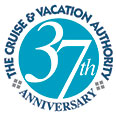To The White Continent: Antarctica
by Toni Dabbs
It wasn't the distance that bothered me, though. I was concerned about ruffling the feathers of the tuxedoed birds.
As it turned out, I needn't have worried. The penguins took me and my shipmates in stride as if we were large rocks or slumbering seals waddling around us with indifference or approaching us with cautious curiosity.
I was visiting Antarctica with Marine Expeditions, a Canadian tour operator that specializes in natural history cruises to the Antarctic (November through March) and the Arctic (June through September). As a member of the International Association of Antarctic Tour Operators (IAATO), the company promotes safe and environmentally responsible tourism to the white continent.
IAATO members ask passengers not to approach within five meters of penguins, seabirds and seals and to give the animals the right of way at all times. The animals, on the other hand, have no rules, and penguins showed little reluctance to approach those of us who stood quietly observing.
The itinerary for our week-long cruise aboard the 100-passenger Russian registered Akademik Ioffe was vague, and pre-departure information stated "ever changing weather, ice or political circumstances often dictate" the ship's route and shore excursions.
"This is expedition cruising. We go with the flow," explained Laurie Dexter, expedition leader for our cruise, the first day at sea. It was his responsibility to coordinate with Captain Nikolay Apekhtin where we could safely anchor and take the Zodiacs to shore.
Dexter, like other Marine Expeditions staff, is well qualified to lead expeditions in both the Arctic and Antarctic. He was a member of the 91-day Soviet-Canadian Polar Bridge ski expedition from Russia to Canada via the North Pole, he has completed a ski crossing of the Greenland ice cap, and he is planning to ski across Antarctica at the end of this year.
Perhaps a little more adventurous than other expedition leaders might be, Dexter managed to pack six shore excursions and two Zodiac cruises into our three-day stay in Antarctic waters. t seems like a long way to go to look at ice and penguins," said an acquaintance when I told her I was going to Antarctica.
One landing each day took us to the rookery of a different species of penguin: the white browed Gentoo; the button-eyed Adelie; and the aptly named Chinstrap, which has a ribbon of black running from its black crown around its white face. All three sites had penguins galore, including large numbers of downy chicks.
At Hannah Point on Livingston Island, we encountered a herd of Southern Elephant Seals heaped together in a muddy wallow, their puppy dog expressions belying the unpleasant sounds and smells they emitted. They seemed unperturbed by the battalion of zoom lenses aimed at them. Our Zodiac cruises reaped close-ups of other seal species solitary Leopard Seals, Weddell Seals and Crabeater Seals lounging on ice floes.
The Zodiac drivers skillfully maneuvered among the fantastically shaped blue and white icebergs of Nature's floating sculpture garden, stopping to let us admire particularly beautiful examples.
A cruise of Paradise Bay took us beneath a sheer cliff streaked turquoise with copper and red with lichen, where a colony of Imperial Shags (cormorants) was nesting. We landed at nearby Almirante Brown Research Station, an Argentine facility abandoned in 1984 after the team's doctor, having been told he would have to spend a second year at the isolated station, set it afire.
On another day, we called at the active Akademik Vernadsky Station, established in 1996 near Britain's now abandoned Faraday Station, which was first to alert the world to changes in the ozone layer. The Ukrainian scientists at Vernadsky, who are continuing the meteorological work begun at Faraday, gave us a guided tour of the facility and opened the "Southernmost Souvenir Shop on the Earth" for spending-starved passengers.
The "shop" is a closet filled with handcrafted items carved and painted by the scientists in their ample free time.
We also visited Deception Island, actually a collapsed volcano that still generates enough thermal activity to make bathing along its beaches possible. We wandered among the remains of a British hangar and airstrip, from which the first powered flight over the continent of Antarctica was made in 1928, and the ruins of a Norwegian-Chilean whaling station that closed in 1931.
Whale sightings were jealously coveted on our expedition, so excitement peaked when, one evening after dinner, we encountered a Humpback Whale feeding frenzy.
Captain Apekhtin turned the ship into their midst and cut the engines, and everyone passengers, staff and crew stood spellbound as an estimated 50 of the great beasts entertained us blowing, breaching, bubbling, lunging from the water head first, and flipping their tails high in the air to signal a deep dive.
The Akademik Ioffe was an ideal platform for viewing seabirds, too. Especially handsome were the Grey-Headed Albatross, with its dark wings and snowy body, and the Cape Petrel, with a distinctive black-and-white checkerboard pattern across its wings.
While there was plenty of fun to be had on our expedition, there also was a strong educational component. Shore excursions and wildlife sightings were supplemented by an optional lecture program, and the ship had a spacious library well stocked with reference books.
A fellow passenger summarized the cruise well, proclaiming: "I'm saturated with experience."

With each issue of Ultimate Experiences Online, you’ll enjoy a collection of articles, slideshows and videos that we will inspire you to make your travel dreams a reality.

To help you discover ways to explore the world, we're pleased to share our The Travel Magazine Online.
 Save money and escape the crowds. Hot Deals and multi-port packages. Savings of up to 50%!
Save money and escape the crowds. Hot Deals and multi-port packages. Savings of up to 50%!

Our free app that allows you to carry all of the destination information you need while traveling, right in your pocket!

We recommend optional travel insurance that protects you in the event of having to cancel your trip avoiding travel vendor cancellation policies and more!





